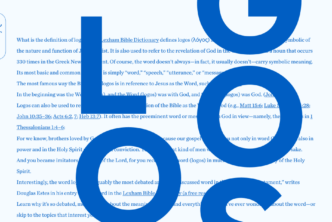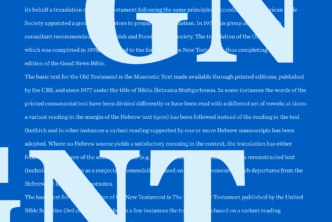I’ve been a Logos Bible Software evangelist and cheerleader since 1997. One of the many reasons I’m so passionate about Logos is because it brings greater insights from the Hebrew and Greek languages to English students. Features like the Exegetical Guide, Bible Word Study, and Information all place original language facts right at our finger tips.
Today, however, I want to remind you of a very simple, yet often overlooked tool, which can easily add depth to your Bible reading: the pop-up morphology. This pop-up morphology window is most helpful if you know Hebrew or Greek, but even if you only know English, there’s one aspect to it that may very well change how you read Scripture.
Rather than explaining let’s just look at a couple of examples:
- Open a Bible containing the reverse interlinear option such as the NASB, ESV, NKJV, or LEB (I’ll use the ESV for this example) (A)
- Make sure the interlinear pane, which covers the pop-up is NOT showing at the bottom of the Bible’s panel (if it is, toggle it off by clicking the Interlinear icon on the Bible’s toolbar) (B)
- Navigate to Daniel 4:25-26 where Nebuchadnezzar is informed he’ll lose his sanity until he acknowledges the sovereignty of God (C)
- Rest your cursor on the word Most or High in verse 25 (D)
- Notice the morphology pop-up window at the bottom of the panel (As I mentioned, earlier much of this information is only helpful if you know a bit of Hebrew, but please keep reading) (E)
- Observe the phrase Most High is singular (F)
- Rest the cursor on the word rules (G)
- Notice it too is singular (H)
- Move to verse 26 and rest the cursor on the word Heaven (I)
- Notice this word is plural! (J)
- Rest the cursor on the word rules which is the same word rules in verse 25, but this occurrence is also plural! (K)
Very interesting!
Now for a New Testament example:
- Navigate to Luke 22:31-32 (L)
- Notice the first occurrence of the pronoun you in verse 31 is plural (referring to all of the apostles) (M)
- Notice the pronoun you in verse 32 is singular (referring to Peter) (N)
Again very interesting!
So here’s the takeaway from the pop-up morphology window. As you’re repeatedly reading a passage from different Bibles during the observation stage of inductive Bible study, rest the cursor on words to activate the pop-up. If you’re not familiar with Hebrew or Greek you may not appreciate all of the data in the window, but most definitely you’ll grasp the difference between singular and plural words!
Now think how these initial observations from reading can impact your study when you transition to the interpretation phase. I don’t know about you, but I want to dig deeper in Scripture, commentaries, dictionaries, and more to find out what’s going on in these (and many more passages) where a simple singular or plural form of a word can impact the interpretation!
For more help using the morphological tools in Logos Bible Software, check out the Logos 6 Training Manual Volumes 1 and 2 Bundle.











